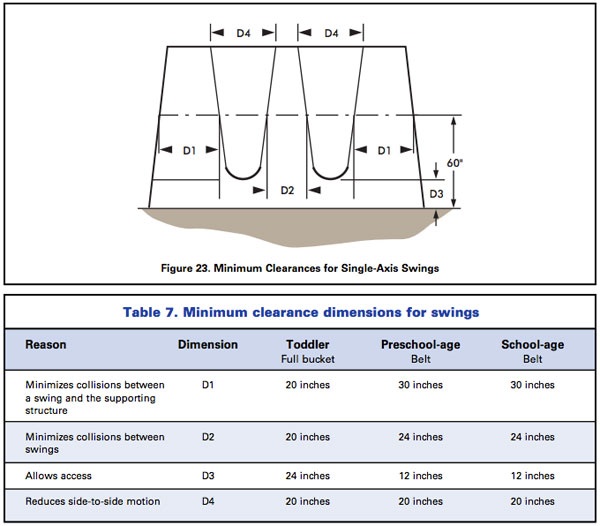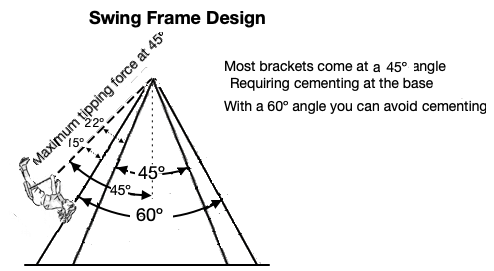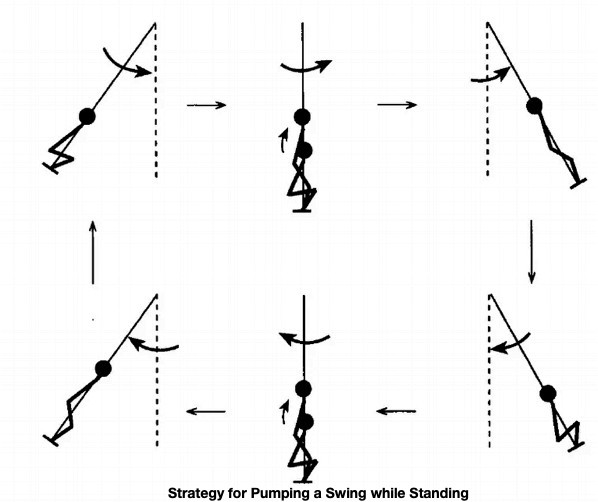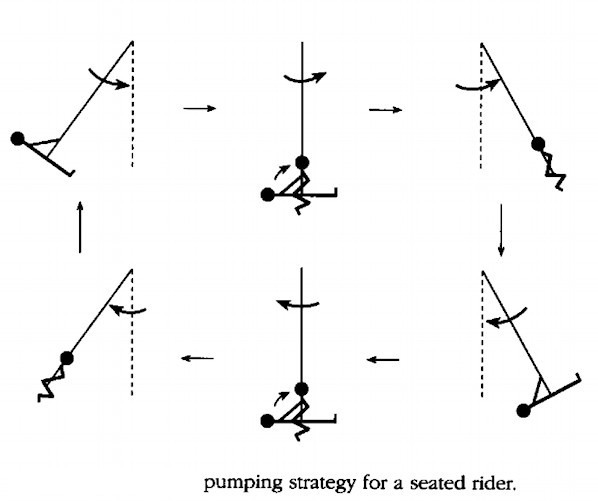last updated 5 Mar 2024
High Swing
Swing Height:
- 8 ft - A great option if it will mainly be used by children.
- 10 ft - Most popular
- 12 ft - For all those thrill-seekers out there - See High Swing
What Height Of Swing Set Should I Get? | Component Playgrounds
5 ft is the most common height for little children.
5’ became a standard height because it is a great compromise. It is short enough not to feel scary and too tall for little children, yet tall enough to keep the swing set interesting for years. This height looks good and seems versatile for children of all ages.
What is the standard height of a swing set? | King Swings
Seat Type:
Belt seats are flexible tend to hold children more securely.
Teenagers may want to stand on the swing and pump to go higher.
For smaller children, a 12-14 inch wide seat is common, while adults typically prefer a 18-24 inch wide seat.
">
See Swinging Technique below


PELLOR Beech Wood Tree Swing Seat Hanging Swing Seat for Adult Kids Children | amazon
Flat swing seats are not recommended for use on school or church playgrounds because they can increase the likelihood of injury from the impact of unoccupied swings.
ADA approved swing seats are available for around $500.
See: Swing Seats | Landscape Structures
Seat Height:
Preschool-age 12 inches
School-age 16 inches
Tot swings (bucket enclosed seats) 24 inches
dimensions 6.6 x 17 to 10 x 20
What Is The Standard Size For A Swing Seat? | Playground Equipment
Seat width:
kids 5-12: 16-18
adults: 18-24
Hanging a swing:
Rope:
3/8 inch is the standard size.
<>>P>
Types of Rope and Their Properties:
For tree swings, polyester rope is often recommended due to its strength, resistance to weather and UV damage, and ability to hold knots well. Nylon rope is also strong but can be slippery for gripping. Polypropylene rope is a budget-friendly, durable option. Manila rope, a natural fiber, offers a classic look and good grip but may not be as durable as synthetics.
- Polyester: 3-strand black $0.35/ft; 3-strand-twisted $0.17/ft - Strong, weather-resistant, UV resistant, and holds knots well. It's a great all-around choice for tree swings.
- Nylon: 3-strand $0.13/ft; double brade $0.30/ft -Very strong, but can be slippery when wet or with prolonged use, making it harder to grip.
- Polypropylene: Lightweight, budget-friendly, and resistant to rot, mildew, and UV damage.
- Manila: $0.12/ft - Natural fiber, classic look, good grip, but may not last as long as synthetics when exposed to the elements.
- Cotton: Soft and comfortable, but generally not as durable as other options for outdoor use.
- Hemp: Can be a good choice for Shibari (art of rope bondage) due to its strength and grip, but can be expensive.
- Braided Rope: Offers high strength and is often used for various outdoor activities, including swings.
- 3-Strand Rope: A classic rope construction, but can rotate under load.
Rope Swings | Rope.com

See more safety information based on U.S. Consumer Product Safety Commission (CPSC), Handbook for Public Playground Safety, Pub. No. 325 at
Playground Information to Use with the Environment Rating Scales - Based on information from the U.S. Consumer Product Safety Commission (CPSC), Revised 2011
Playground Information to Use with the Environment Rating Scales | UNC 2006
Frame Design:
Material:
A-frame
A 4x4 that is 12’ long will support about 4,000 lbs. each (depending on the species and grade). A 16’ 4x4 will support about half that and a 20’ 4x4 will support almost 1,000 each.
Onme person commented "If you go more than 12 feet above the ground I'd look for a more robust design."
a-frame angle - Tipping Force:

As you swing higher you slow down so the centripetal force is decreasing.
You can get up to almost 90° before slack. | YouTube
Angles on swing sets
Using a simple pendulum approximation, at the point of , the maximum tipping force occurs when the swing is at 𝜃=45°
angle. In general the forces on the bar are:
𝐴𝑥=−cos𝜃(𝑚𝑔sin𝜃+𝜏𝐿)−𝑚𝐿𝜃˙2sin𝜃
where 𝐿 is the chain length,
𝜏 is the torque applied by your back on the pelvis (pull up torque)
and 𝑚
is the mass of the swinger.
If ℎ
is the height of the bar from the ground, and 𝑏
the base distance across the A-frame then the forces on supports are
𝐴𝑦=𝑚cos𝜃(𝑔cos𝜃+𝐿𝜃˙2)−𝜏𝐿sin𝜃
Swinging Technique
What’s the Best Way to Swing a Playground Swing? | Smithsonianmag

As ther rider stands or crouches the effective length of the pendulum varies.

The seated rider changes the orientation of her body with respect to the rope, causing an increase in system energy.
Pumping your legs on a swing increases your potential energy. This is done by raising your legs at the peak of each swing, which increases the height of your body's center of mass. This makes you swing higher.
Seated pumping is the better strategy at low amplitudes, but above certain amplitude standing is more effective.
Strategy for Pumping a swing while standing | Smithsonian
How to pump a swing. | College Mathematics Journal
When stands up the centre of mass gets higher which is also the point of oscillation. As a result the effective length will decrease. Now since the time period varies with the square root of the effective length, time period will decrease.
Physics of Pumping a Swing YouTube
Links:
Playground Swings | Playset Parts
 Home & Garden
Home & Garden
 Yard Play Sets
Yard Play Sets
 Swing Design
Contact
Swing Design
Contact
 Home & Garden
Home & Garden
 Yard Play Sets
Yard Play Sets
 Swing Design
Contact
Swing Design
Contact





